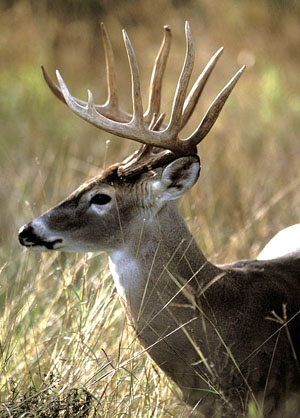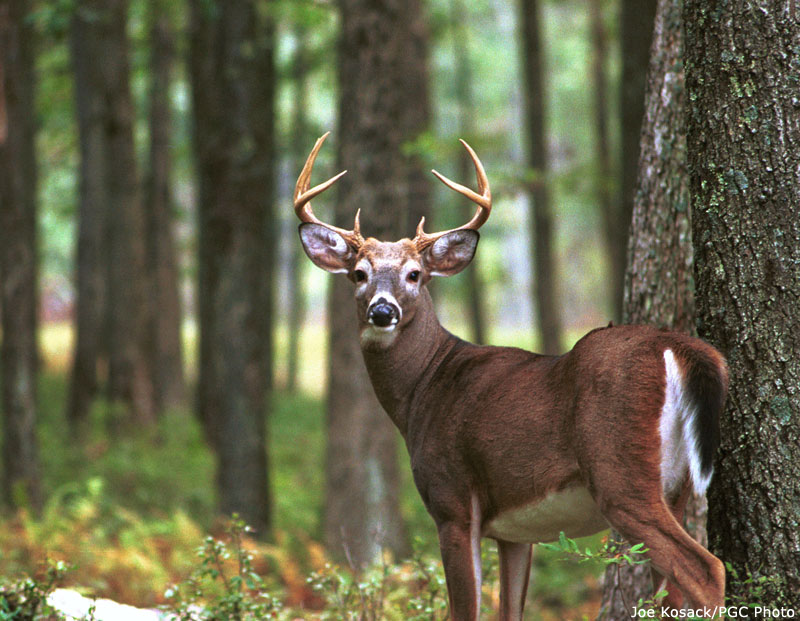 |
The white-tailed deer (Odocoileus virginianus), also known as the Virginia deer, or simply as the whitetail, is a medium-sized deer native to the United States (all but five of the states), Canada, Mexico, Central America, and in South America as far south as Peru. It has also been introduced to New Zealand and some countries in Europe, such as Finland and the Czech Republic. |
|
|
|
| The species is most common east of the Rocky Mountains, and is absent from much of the western United States, including Nevada, Utah, California, Hawaii, and Alaska (though its close relatives, the mule deer and black-tailed deer Odocoileus hemionus, can be found there). It does, however, survive in aspen parklands and deciduous river bottomlands within the central and northern Great Plains, and in mixed deciduous riparian corridors, river valley bottomlands, and lower foothills of the northern Rocky Mountain regions from Wyoming to southeastern British Columbia. The conversion of land adjacent to the northern Rockies into agriculture use and partial clear-cutting of coniferous trees (resulting in widespread deciduous vegetation) has been favorable to the white-tailed deer and has pushed its distribution to as far north as Prince George, British Columbia. Populations of deer around the Great Lakes have also expanded their range northwards, due to conversion of land to agricultural uses favoring more deciduous vegetation, and local caribou and moose populations. The westernmost population of the species, known as the Columbian white-tailed deer, once was widespread in the mixed forests along the Willamette and Cowlitz River valleys of western Oregon and southwestern Washington, but today its numbers have been considerably reduced, and it is classified as near-threatened. The white-tailed deer is well-suited for its environment. Fossil records indicate that its basic structure has not changed in four million years. |
 |
|
|
|
|
|
The deer's coat is a reddish-brown in the spring and summer and turns to a grey-brown throughout the fall and winter. The deer can be recognized by the characteristic white underside to its tail, which it shows as a signal of alarm by raising the tail during escape. The North American male deer (also known as a buck) usually weighs from 130 to 300 pounds (60 to 130 kg) but, in rare cases, bucks in excess of 375 pounds (159 kg) have been recorded. The record-sized White-tailed Deer weighed just over 500 pounds and was found in Minnesota. The female (doe) usually weighs from 90 to 200 pounds (40 to 90 kg). Length ranges from 62 to 87 inches (160 to 220 cm), including the tail, and the shoulder height is 32 to 40 inches (80 to 100 cm). White-tailed deer from the tropics tend to be much smaller than temperate populations, averaging 77–110 pounds (35–50 kg). |
|
|
|
| Mallard Ducks Canada Geese |